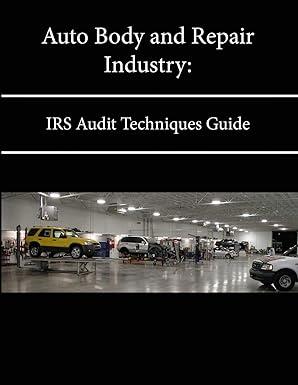Question
Short Problems: 1. Below are listed possible misstatements that could occur in the sales and collections cycle. Provide the analytical procedure that would be most
Short Problems:
1. Below are listed possible misstatements that could occur in the sales and collections cycle. Provide the analytical procedure that would be most useful in detecting the possible misstatement. a. Overstatement of sales and accounts receivable b. Uncollectible accounts receivable that have not been provided for (i.e., the allowance for doubtful accounts and bad debt expense are understated) c. Overstatement of sales returns and allowances
2. List 3 different analytical procedures that could be used in the audit of prepaid insurance and insurance expense. Write each as an audit procedure that could be performed by an audit staff. Document over which audit objective(s) each test will provide you comfort.
3. Given the following information about your audit client, perform analytical procedures and comment on your findings. Specifically document what you did (calculations and comparisons) and your conclusion on what audit objective(s) might be at risk for this account. 2010 2011 Industry Average Inventory $20,000 $32,000 $25,000 Cost of Sales $240,000 $320,000 $400,000 Long Problem: You are auditing payroll and salaries for Morehead Technologies for the year ended December 31, 2011. Below are the payroll related balances from the clients trial balance along with comparative audited information for the prior year: Audited Balance 12/31/2010 Unaudited Balance 12/31/2011 Sales1 $51,316,234 $57,474,182 Executive Salaries 546,940 615,970 Factory Hourly Payroll 10,038,877 11,476,319 Factory Supervisors Salaries 785,825 810,588 Office Salaries 1,990,296 2,055,302 Sales Commissions 2,018,149 2,367,962 You have obtained the following information to help you perform preliminary analytical procedures for the payroll account balances.
1. There has been a significant increase in the demand for Moreheads products. The increase in sales was due to both an increase in the average selling price of 4 percent and an increase in units sold that resulted from the increased demand and an increased marketing effort.
2. Even though sales volume increased, there was no addition of executives, factory supervisors, or office personnel.
3. All employees including executives, but excluding commission salespeople, received a 3 percent salary increase starting January 1, 2011. Commission salespeople receive their increased compensation through the increase in sales.
4. There was an increase in the number of factory hourly employees, which was accomplished by recalling employees that had been laid off. They receive the same wage rate as existing employees. Morehead does not permit overtime.
5. Commission salespeople receive a 5 percent commission on all sales on which a commission is given. Approximately 75 percent of sales earn sales commission. The other 25 percent are call-ins for which no commission is given. Commissions are paid in the month following the month they are earned.
Requirements
a. Use the final balances for the prior year and the information in items 1 through 5 to develop an expected value for each of the payroll accounts (not sales). Provide details of your calculations and explanations of your assumptions.
b. Calculate the difference between your expectation and the clients recorded amount as a percentage using the formula: (expected-recorded)/expected.
Step by Step Solution
There are 3 Steps involved in it
Step: 1

Get Instant Access to Expert-Tailored Solutions
See step-by-step solutions with expert insights and AI powered tools for academic success
Step: 2

Step: 3

Ace Your Homework with AI
Get the answers you need in no time with our AI-driven, step-by-step assistance
Get Started


